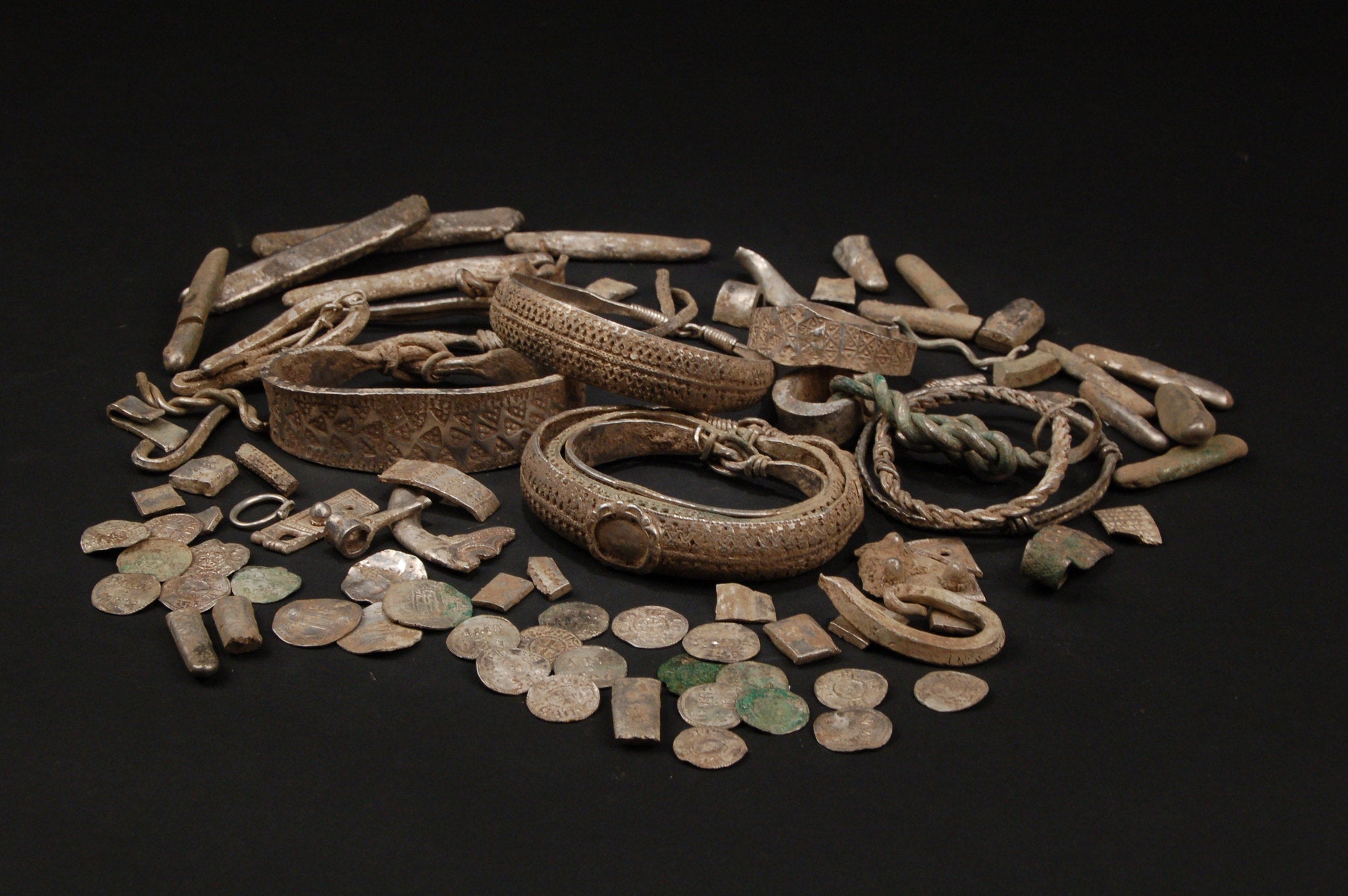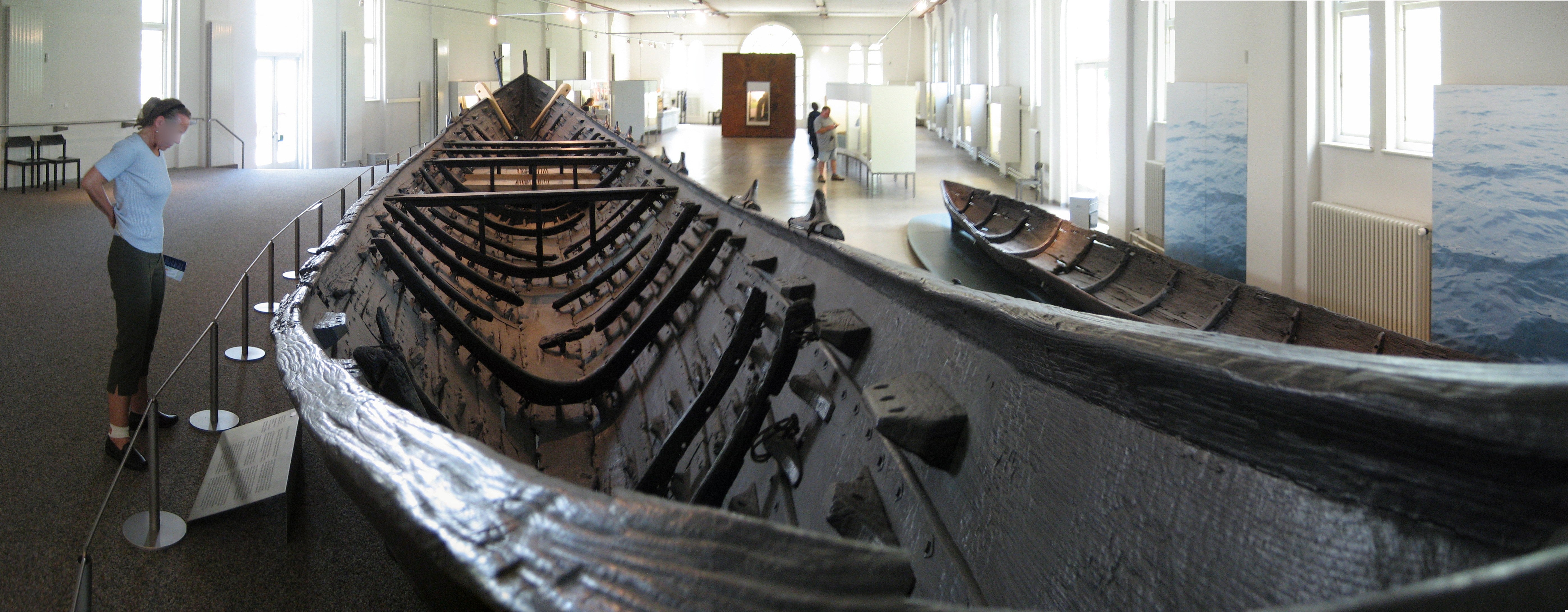
The Silverdale Hoard: One of England's Largest Viking Finds
The Silverdale Hoard, a treasure trove of Viking artifacts unearthed amidst the verdant fields of England, offers not just a glimpse, but a mesmerizing portal into the enigmatic world of the Norsemen. Its discovery, a fortuitous stroke of fate orchestrated by Darren Webster, a humble metal detectorist, marks the convergence of chance and historical significance. As Webster, armed with little more than a metal detector gifted to him by his wife, embarked on yet another routine exploration of the countryside near Silverdale, little did he know that he was about to stumble upon a treasure trove that would captivate the imagination of historians and archaeologists alike.
Discovery
The Silverdale hoard’s fascinating tale is one of happenstance and historical relevance. With recent advances in technology, Viking treasure found in England is only becoming more common - this treasure hoard in particular was unearthed by a man with the name of Darren Webster – a local metal detectorist. Webster had received this metal detector as a Christmas gift from his wife. He was exploring a field near Silverdale, and had done so several times earlier without finding anything of note save for a Tudor half-groat.
Webster had collected his son from school on the day of the discovery. On the way back to work, he came to the decision to allow himself a couple more hours in the field. After only 20 minutes, the metal detector hit a strong signal and Webster went digging. He dug 16 inches deep (41cm) and discovered a lead container burrowed under the soil. Initial disappointed by a mere sheet of led, he realised it was shaped like a container. And, as he raised it, a cluster of silver objects flung out.

Second showcase at Jorvik 2022, including the lead container.
Webster says he immediately recognised the significance of the find as he saw the silver. “The minute I found [the silver] I knew what it was or had a very good idea of it,” he said. He knew immediately that it was “more than likely Viking.”
Following the discovery, Webster reported the find to the Portable Antiquities Scheme’s local Finds Liaison Officer. The Portable Antiquities Scheme is run by the British Museum and Amgueddfa Cymru - Museum Wales to encourage the recording of archaeological objects found by members of the public in England and Wales. The items were then taken to the British Museum for further examination. At the British Museum, the hoard underwent a series of processes including weighing, analyzing, cataloguing, and cleaning. The curators prepared a report for the coroner describing the contents of the hoard and advising whether the hoard qualifies as Treasure. This slow and meticulous process ensured that each artifact was properly documented and preserved, contributing to our understanding of the Viking Age.
Contents of the Hoard

The artifacts grouped, Image by Ian Richardson
The Silverdale Viking Hoard is a captivating assortment of various silver items, each with its own story to tell. Being one of the largest Viking treasures found, the hoard comprises a total of 27 coins, 10 arm-rings, two finger-rings, 14 ingots, six brooch fragments, a fine wire braid, and 141 fragments of arm-rings and ingots.
These items were not left intact but were chopped up and transformed into what is known as hacksilver. Hacksilver refers to pieces of silver jewelry or coins that were cut and bent into fragmented shapes. This was a common practice during the Viking Age, where these fragments were used as a form of currency. The weight of the silver, rather than the original form of the item, determined its value.
The hoard includes an intriguing mix of Arabic, Anglo-Saxon, Anglo-Viking, and Nordic (or Viking) coins. These coins provide a fascinating insight into the extensive trade networks and cultural exchanges of the Viking Age. They date to around AD 900, a period of significant historical events and changes.

Viking Arm Rings from the Hoard, Image by Ian Richardson
Among the coins, there are those of Alfred the Great, the renowned King of Wessex, known for his successful defence against Viking invasions. His coinage, found in the hoard, is a testament to his influential reign and the reach of his kingdom.
The hoard also includes coins from the Danish-ruled Kingdom of Northumbria. Northumbria was one of the various kingdoms in England that fell under Viking control during the late 9th and early 10th centuries. The presence of these coins in the hoard provides evidence of the Viking influence in this region.
The contents of the Silverdale Hoard offer a rich and diverse snapshot of the Viking Age. Each item, from the smallest fragment of hacksilver to the most intricately designed coin, contributes to our understanding of this fascinating period in history.
Significance

Laying out the Hoard, Image by Ian Richardson
The Silverdale Hoard holds a prominent position in the annals of archaeological discoveries in the United Kingdom. It is one of the largest Viking treasure hoards ever unearthed in the country. This distinction alone underscores its importance, as it provides a substantial material record of the Viking presence in England during the late 9th and early 10th centuries.
However, the significance of the Silverdale Hoard extends beyond its size. One of the most remarkable aspects of the hoard is the inclusion of a coin stamped with the name of a previously unknown Viking ruler. This coin, which bears the name ‘Airdeconut’, has opened up new avenues of research and interpretation about the Viking presence in England during this period. The discovery of this coin suggests that our understanding of the political landscape of Viking Age England may be incomplete and that there may have been other Viking leaders, like the one named on the coin, who played significant roles but have been lost to history.

Nested Bracelet closeup, Image by Ian Richardson
This single coin has sparked a flurry of new research, as historians and archaeologists seek to uncover more information about this previously unknown ruler. The coin’s discovery has led to a re-evaluation of historical records and archaeological findings, with scholars looking for other possible references to this ruler. This process of re-examination and discovery is ongoing, and it is hoped that it will shed new light on the complex and dynamic nature of Viking Age England.
The Silverdale Hoard has significantly enhanced our comprehension of the economic and cultural interactions prevailing during its era. Notably, the inclusion of diverse items within the hoard, such as Arabic, Anglo-Saxon, Anglo-Viking, and Viking coins, hints at an extensive network of trade and cultural exchange. Remarkably, the presence of Arabic coins in particular raises intriguing questions about their origin and journey. While one might initially assume these coins were obtained through raids, it seems improbable for Vikings to transport them all the way to England if their point of origin was in Scandinavia. This suggests that the Arabic coins, prior to their burial, likely found their way to England through trading routes, shedding light on the intricate trade connections that spanned vast distances during this period. This further underscores the significance of the hoard, as it provides tangible evidence of the far-reaching connections and influences of the Vikings and Norsemen as a whole.
Conclusion:
In the annals of archaeological discoveries, few artifacts possess the allure and intrigue of the Silverdale Hoard. From its humble origins beneath the fertile soil of England to its transformation into a symbol of cultural exchange and historical revelation, the journey of the Silverdale Hoard is a testament to the enduring legacy of the Viking Age. As scholars continue to unravel the mysteries concealed within its gleaming treasures, one thing remains abundantly clear – the Silverdale Hoard is more than just a collection of coins and artifacts; it is a window into a bygone era, a tangible link to the past that continues to captivate the imagination of historians and enthusiasts alike. From the enigmatic ruler stamped on a single coin to the intricate network of trade routes that spanned continents, the Silverdale Hoard offers a tantalizing glimpse into the complexities of Viking society and the dynamic interactions that shaped the medieval world.








